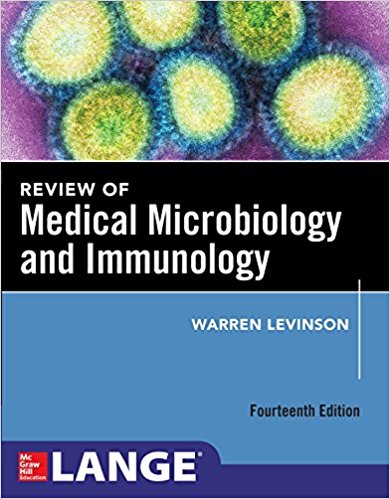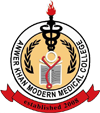Anwer Khan Modern Medical College
Library Management System

| Title: | Review of medical microbiology |
| Author Name: | Warren Levinson. |
| Author Sur Name: | LEVINSON, Warren. |
| Author information: |
|
| Edition/Published: | 14th ed. _New York : McGrawHill , 2016 |
| New to this edition: |
|
|
Physical Description: x, 822p., : ill. (chiefly col.), chart.; 27.5cm. ...( A LANGE medical book ) |
| Notes | Includes Index. |
| Includes Index: | P. 761-822 |
| ISBN No's: | 978-1-259-25127-6 |
| Bar Code's: | |
| Shelf Location's: | 61 |
| Classification | |
| Subject: | Medical Microbiology--Outlines, Syllabi. |
| Dewey Class No: | 616.9/041 |
| Letter Call No: | L59r |
| LC Classification: | QR46 .L64 2016 |
| Other's Book Information | |
| Book ID No: | 1713 |
| Total Books: | 1 |
| Date of collection's: | 01-Nov-2016 |
| Donation / Purchase: | Purchase |
| Language: | English |
| Department: | Microbiology |
| Synopsis: |
|
| Description: |
|
| Key Features: |
|
| Summary: |
|
| Abstract: |
|
| Preface: |
|
| Content: |
Preface-v Acknowledgements-vii How to Use This Book-ix I: Basic Bacteriology-1 1. Bacteria Compared With Other Microorganisms-1 2. Structure of Bacterial Cells-4 3. Growth-15 4. Genetics-18 5. Classification of Medically Important Bacteria-24 6. Normal Flora-26 7. Pathogenesis-31 8. Host Defenses-52 9. Laboratory Diagnosis-61 10. Antimicrobial Drugs: Mechanism of Action-69 11. Antimicrobial Drugs: Resistance-87 12. Bacterial Vaccines-96 13. Sterilization & Disinfection-100 II: Clinical Bacteriology-105 14. Overview of the Major Pathogens & Introduction to Anaerobic Bacteria-105 15. Gram-Positive Cocci-109 16. Gram-Negative Cocci-128 17. Gram-Positive Rods-135 18. Gram-Negative Rods Related to the Enteric Tract-148 19. Gram-Negative Rods Related to the Respiratory Tract-171 20. Gram-Negative Rods Related to Animal Sources (Zoonotic Organisms)-177 21. Mycobacteria-183 22. Actinomycetes-194 23. Mycoplasmas-197 24. Spirochetes-199 25. Chlamydiae-208 26. Rickettsiae-212 27. Minor Bacterial Pathogens-217 III: Basic Virology-225 28. Structure-226 29. Replication-232 30. Genetics & Gene Therapy-244 31. Classification of Medically Important Viruses-248 32. Pathogenesis-253 33. Host Defenses-260 34. Laboratory Diagnosis-266 35. Antiviral Drugs-269 36. Viral Vaccines-280 PART IV: Clinical Virology-285 37. DNA Enveloped Viruses-288 38. DNA Nonenveloped Viruses-304 39. RNA Enveloped Viruses-311 40. RNA Nonenveloped Viruses-333 41. Hepatitis Viruses-342 42. Arboviruses-354 43. Tumor Viruses-361 44. Slow Virus & Prions-372 45. Human Immunodeficiency Virus-378 46. Minor Viral Pathogens-391 V: Mycology 47. Basic Mycology-397 48. Cutaneous & Subcutaneous Mycoses-403 49. Systemic Mycoses-407 50. Opportunistic Mycoses-414 VI: Parasitology 51. Intestinal & Urogenital Protozoa-424 52. Blood & Tissue Protozoa-433 53. Minor Protozoan Pathogens-450 54. Cestodes-453 55. Trematodes-462 56. Nematodes-469 VII: Immunology-489 57. Immunity-489 58. Cellular Basis of the Immune Response-500 59. Antibodies-522 60. Humoral Immunity-531 61. Cell-Mediated Immunity-534 62. Major Histocompatibility Complex & Transportation-536 63. Complement-542 64. Antigen-Antibody Reactions in the Laboratory-546 65. Hypersensitivity (Allergy)-557 66. Tolerance & Autoimmune Disease-567 67. Tumor Immunity-576 68. Immunodeficiency-578 VIII: Ectoparasites-585 69. Ectoparasites That Cause Human Disease-585 IX: Infectious diseases-593 70. Bone and joint infections-593 71. Caridac Infections-598 72. Central nervous system infections-605 73. Gastrointestinal tract infections-614 74. Pelvic infections-622 75. Upper respiratory tract infections-629 76. Lower respiratory tract infections-635 77. Skin and soft tissue infections-641 78. Urinary tract infections-649 X: Brief Summaries of Medically Important Organisms-653 XI: Clinical Cases-691 XII: Pearls for the USMLE-701 XIII: USMLE (National Board) Practice Questions-709 XIII: USMLE (National Board) Practice Examination-751 Index-761 |
